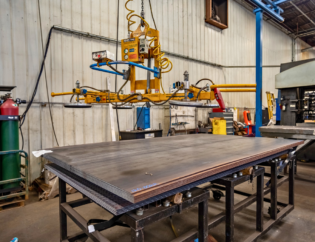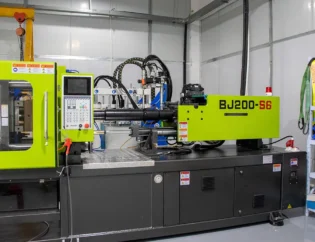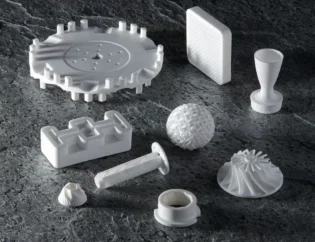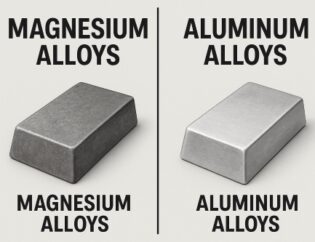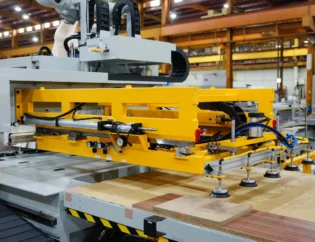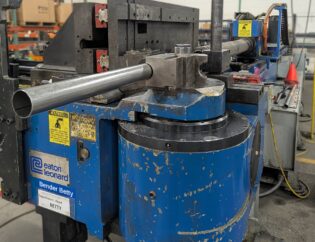Milling steel is a fundamental process in manufacturing that transforms raw materials into precise components. Understanding this technique is crucial for engineers, machinists, and hobbyists alike, as it directly impacts the quality and efficiency of production. This guide will delve into the intricacies of milling steel, providing insights into techniques, tools, and best practices.
Readers can expect to learn about the various types of milling machines, cutting tools, and the importance of selecting the right parameters for different steel grades. Additionally, we will explore common challenges faced during milling and effective solutions to overcome them. By the end of this guide, you will be equipped with the knowledge to enhance your milling skills and optimize your projects.
A Comprehensive Guide to Milling Steel
Milling steel is a critical operation in today’s manufacturing practice, fundamental in making accurate parts and structures for the automotive and aerospace industries. Engineering professionals like engineers and machinists will find this post to enhance their understanding of the fundamentals of milling steel. This guide includes the methods and considerations required for successful machining so that professionals can become well-equipped. You will find this article insightful if you are looking for tips to improve your milling skills, whether you want to increase production efficiency or get perfect finishes.
Technical Features of Steel Milling
Milling steel involves various technical features that are essential for achieving high-quality results. Below is a comparison table highlighting some of the key technical features associated with milling steel.
| Feature | Description |
|---|---|
| Cutting Tools | Tools like end mills, face mills, and insert cutters are commonly used. |
| Material Types | Carbon steel, alloy steel, tool steel, stainless steel, and high-speed steel. |
| Machining Process | Subtractive manufacturing that removes material to achieve desired shapes. |
| Cooling Methods | Flood coolant, mist coolant, and dry machining techniques are employed. |
| Feed Rate | The speed at which the workpiece is fed into the cutting tool. |
| Spindle Speed | The rotational speed of the cutting tool, crucial for effective cutting. |
| Surface Finish | Achieved through proper tool selection and machining parameters. |
| Tool Wear | Regular monitoring and maintenance are required to ensure tool longevity. |
Different Types of Steel Used in Milling
Understanding the different types of steel is crucial for selecting the right material for milling operations. Below is a comparison table of various steel types commonly used in milling.
| Type of Steel | Characteristics | Applications |
|---|---|---|
| Carbon Steel | Economic and easy to machine; good for general-purpose applications. | Structural components, automotive parts. |
| Alloy Steel | Enhanced strength and toughness due to added elements like chromium and nickel. | High-stress applications, gears. |
| Tool Steel | High hardness and wear resistance; ideal for cutting tools. | Manufacturing cutting tools. |
| Stainless Steel | Corrosion-resistant; used in environments where hygiene is critical. | Food processing, medical devices. |
| High-Speed Steel (HSS) | Designed for high-speed applications; maintains hardness at elevated temperatures. | Cutting tools, drill bits. |
The Milling Process
The milling process involves several stages, including initial machining, medium precision machining, high precision machining, and finishing machining. Each stage plays a vital role in shaping the steel workpiece to the desired specifications.
- Initial Machining: The bulk of the material is removed from the block of steel.
- Medium Precision Machining: The element takes shape close to the final design.
- High Precision Machining: The element is finally formed and has its final shape.
- Finishing Machining: Focused on sanding and polishing the surface of the element.
Choosing the Right Cutting Tool
Selecting the appropriate cutting tool is crucial for successful milling operations. Factors to consider include the hardness of the material, the required accuracy, and the specific application. Tools made from carbide are often preferred for their strength and heat resistance, while high-speed steel (HSS) tools are suitable for general cutting tasks.
Importance of Cooling and Lubrication
Cooling and lubrication are essential in milling steel to reduce friction and heat generation. Effective cooling methods, such as flood coolant or mist coolant, help maintain optimal temperatures during machining, preventing tool wear and ensuring a better surface finish. Proper lubrication also enhances tool life and improves machining efficiency.
Common Challenges in Steel Milling
Milling steel presents several challenges, including tool wear, surface finish issues, and material removal efficiency. Addressing these challenges requires careful monitoring of machining parameters, regular tool maintenance, and the use of advanced cutting tools and coatings.
Conclusion
Milling steel is a complex process that requires a deep understanding of materials, tools, and machining techniques. By selecting the right tools and parameters, professionals can achieve high-quality results in their milling operations. Whether you are working with carbon steel, stainless steel, or high-speed steel, understanding the nuances of milling will enhance your production efficiency and the quality of your finished products.
FAQs
Q1: What is the best type of steel for milling?
A1: The best type of steel for milling depends on the application. Carbon steel is economical and easy to machine, while stainless steel offers corrosion resistance for specific applications.
Q2: How does cooling affect the milling process?
A2: Cooling helps reduce friction and heat generation during milling, preventing tool wear and ensuring a better surface finish.
Q3: What are the common tools used in steel milling?
A3: Common tools include end mills, face mills, and insert cutters, each designed for specific milling tasks.
Q4: How can I improve the surface finish of milled steel?
A4: Improving surface finish can be achieved by optimizing cutting speeds, feed rates, and using appropriate tool coatings.
Q5: What challenges are faced during steel milling?
A5: Common challenges include tool wear, achieving the desired surface finish, and maintaining material removal efficiency. Regular monitoring and maintenance can help mitigate these issues.


